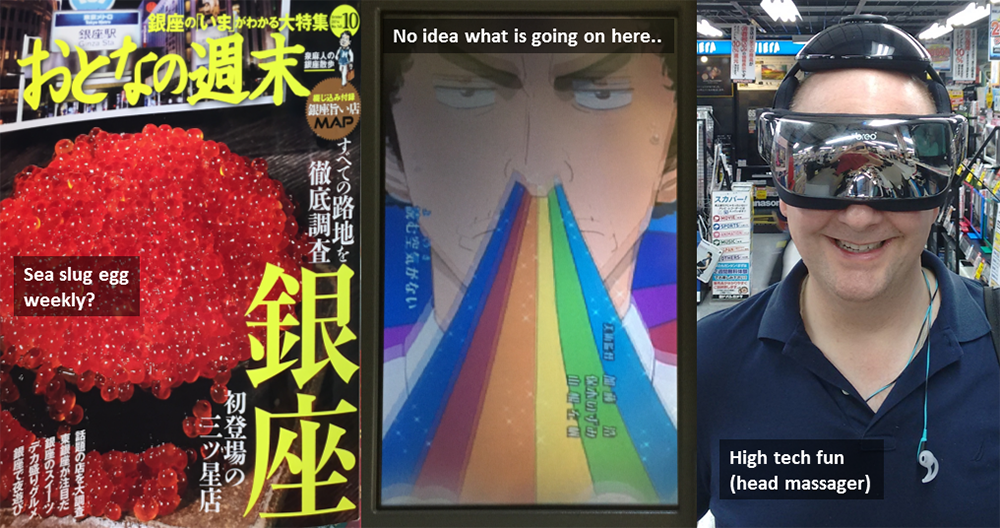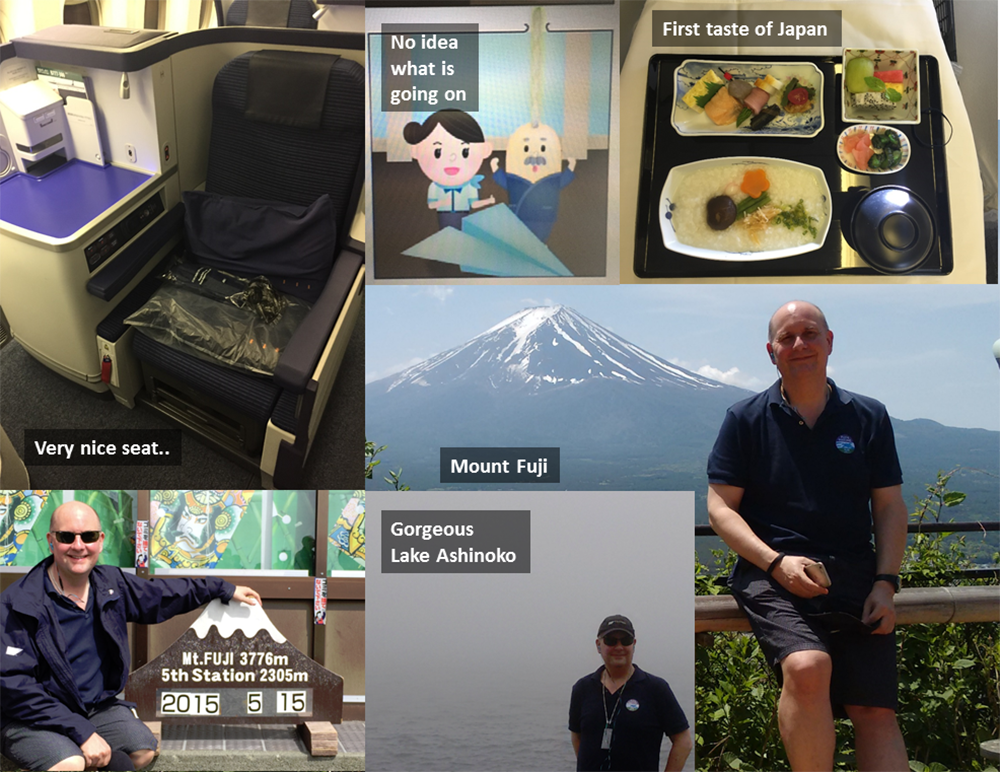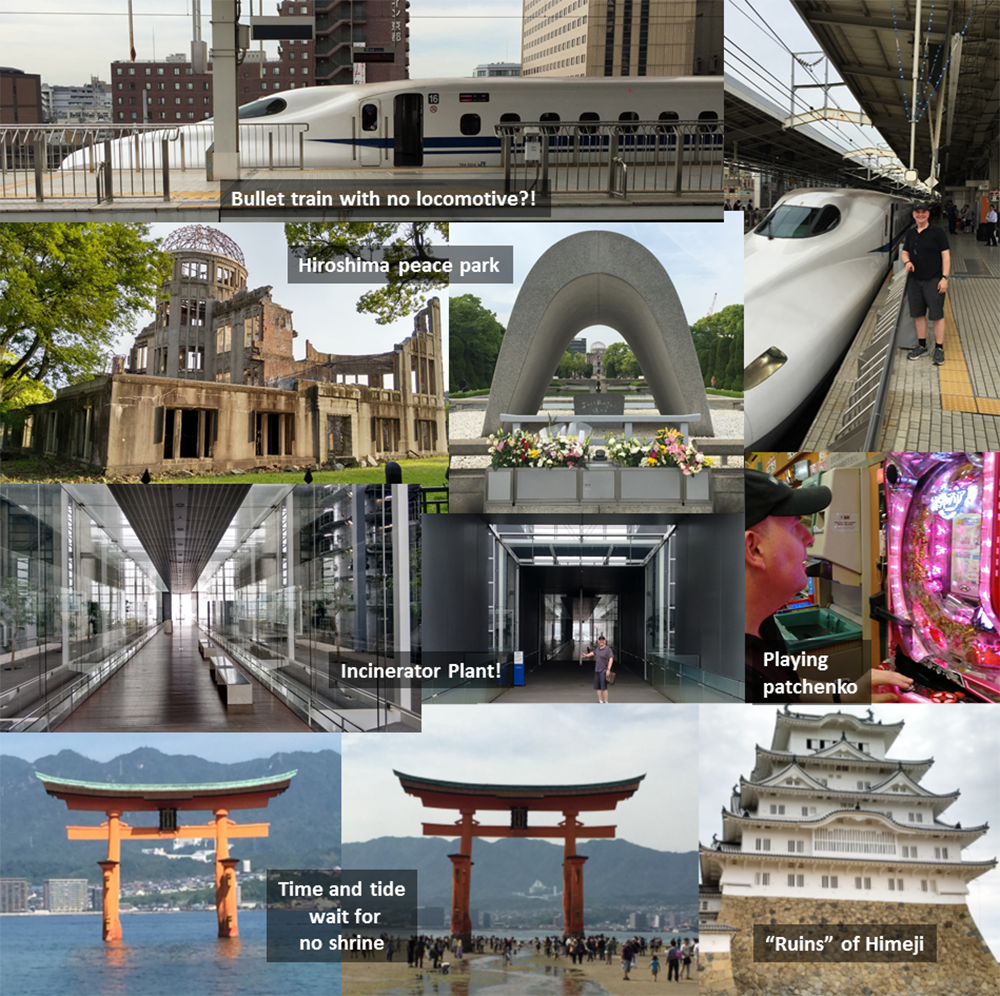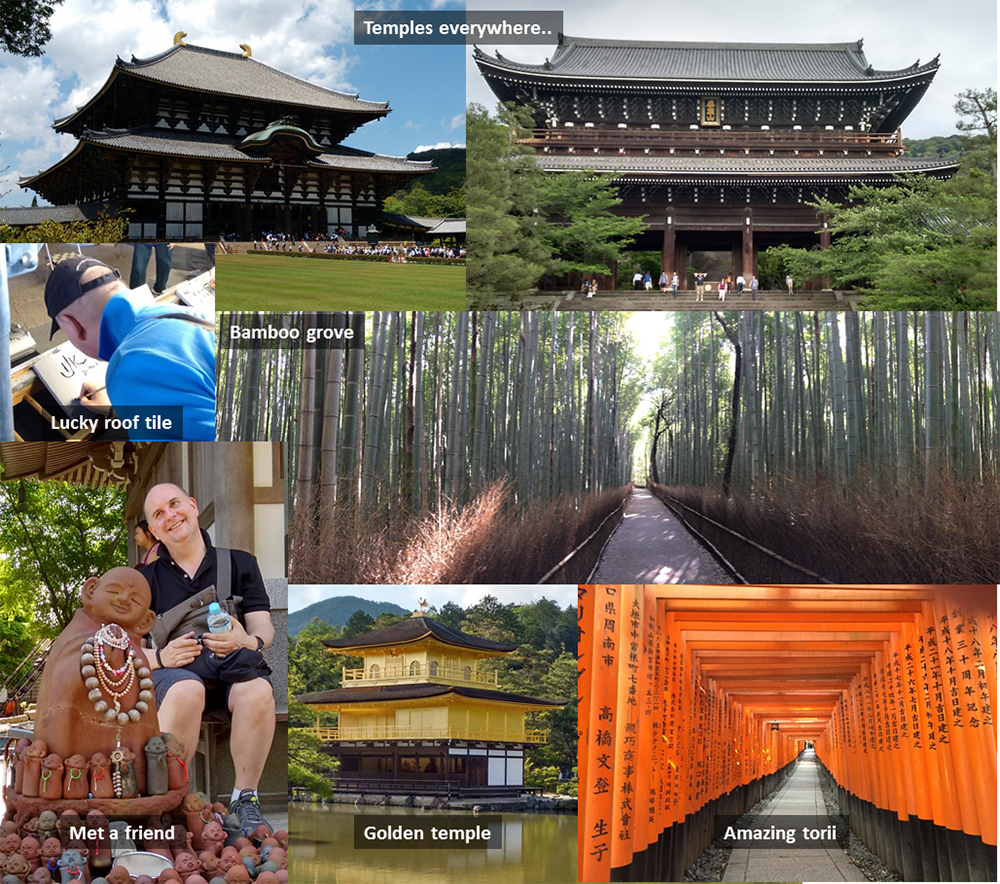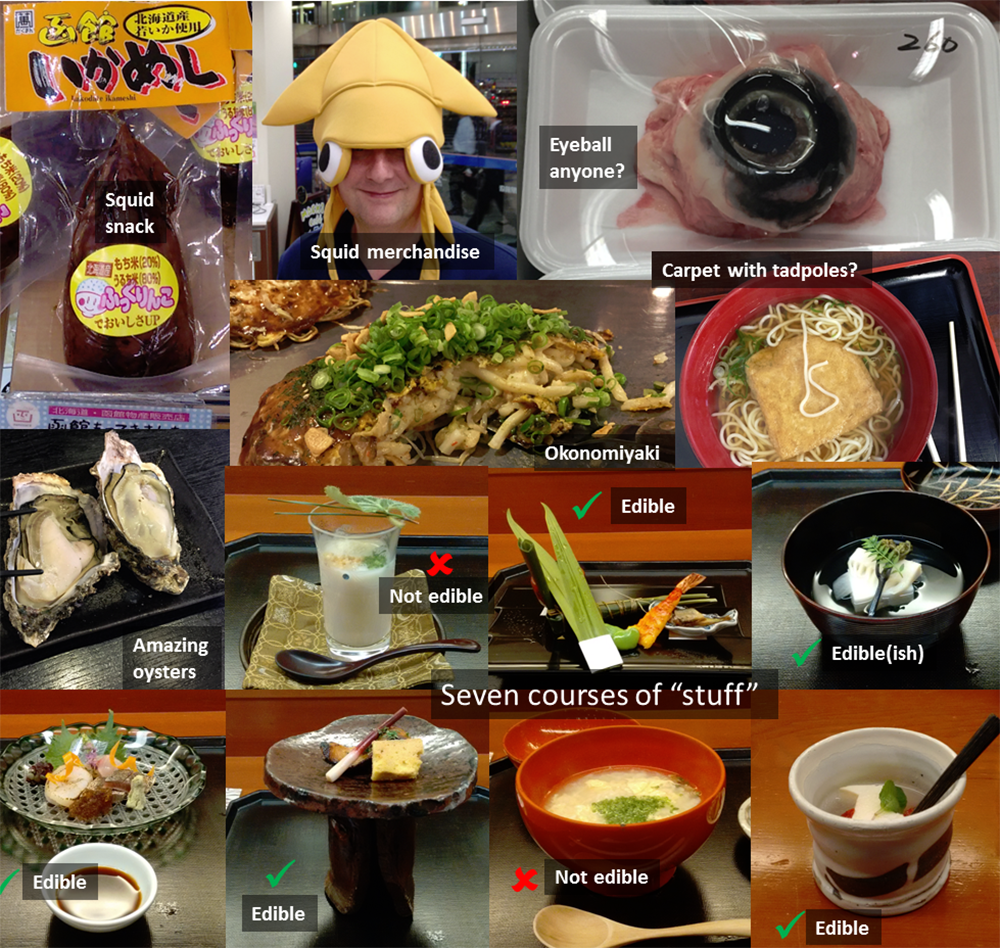Sitting in luxurious ANA business class seat on the way to Tokyo, I casually flicked through a few channels and decided on a documentary of Hiroshima. The program featured a guy emitting a beam of light from head, who summoned giant paper airplanes for no apparent reason – not the first thing that springs to mind when you say “Hiroshima”, but this was the motto of this little break – just go with the flow.
After a week working in Tokyo, the holiday began in earnest and I welcomed one of my oldest school friends (figuratively and literally) to the tour. Stunning weather accompanied us on trip and the sun beamed down on us as we reached our first stop – Mount Fiji. We first visited some adjacent scenic views points before heading up to Fuji’s Station 5 at 2,500 meters, about 1,300 meters from the summit. Until the hiking season begins in July, this is the highest accessible point but offers little in the way of views, or things to do and see. We frolicked in the snow for a while, but soon descended to see one the best beauty spots in Japan, Lake Ashinoko. However, by the time we got there, the fog had rolled in and we ended up driving 2 hours to see a fog bank – but some consolation was the vending machines which dispensed excellent cans of piping hot coffee. These machines would are everywhere in Japan and sell everything from reasonably priced drinks to panties (used or unused), (really).
From there we took the amazing shinkansen (bullet train) to Hiroshima. The trains themselves are engineering marvels, each axel is powered, so there is no locomotive and the acceleration out of a station is unbelievably smooth and fast. Additionally there are no signals along the track, all is controlled centrally which enables an average speed of over 200km/h even with stops. The 900km journey took just 4 hours 20 minutes and at peak times there is a train every 3 minutes. We had free reign of the whole network thanks to our Japanese Rail passes which paid for themselves multiple times over the week.
Hiroshima, translates as “big island”, but it isn`t one. It sits on 6 rivers and there were two main reasons for us to come here. The Peace Park commemorating the obvious, (although not so obvious from the documentary I saw on the plane) and the most high tech rubbish incineration plant on the planet (really).
The park contains a collection of museums and memorials that draw millions of visitors annually and is incredibly moving. Half of the permanent exhibition was sadly being renovated, but the part we saw was very poignant; remnants of clothing, children’s melted belongings, and outlines of bodies on a wall – all tastefully presented. The visit culminates at Atomic Bomb Dome memorial, the only structure left standing near the bomb’s hypocenter and a UNESCO site. After that the high tech incinerator was much more fun (I was going to say it was a blast, but I am not sure that is appropriate).
With our “go anywhere” rail pass we took trip out to the island of Miyajima, with its beautiful “floating” torii shrine, but upon our return from a trip up to the island summit (via a “ropeway” – a euphemism for cable car, chair lift or any other rope base transportation system) the tide had gone out and the torii was not so floaty, in fact it was stuck in a pile of mud.
From Hiroshima we headed to the “ruins” of the Himeji castle. Dating to 1333, it is a superb example of yet another UNESCO site in Japan. The Japanese are really keen on awards, things that aren’t a UNESCO site, are a “registered tangible cultural property” but this castle is well deserving of the original accolade. It has been beautifully restored (it only opened in March after being under wraps for 7 years) and the defense fortifications alone were worth the trip – especially designed windows for archers, secret slues for boiling oil, white paint for flame residence, a maze of corridors, steep narrow staircases, secret doors for samurai to hide in – shoguns were obviously paranoid.
From Himeji we tootled up to Kyoto and their 17 UNESCO sites. These are rather inconveniently far apart from each other, so we hired bikes and spent several days visiting a lot of temples, gardens and shires. Temple crowds were polarized either overrun with thousands of school troops & tour groups or totally empty. Either way, after the 7th or 8th, you sort of get “templed out” and they sort of blur in to one another, but somethings remain etched in memory:
- The “golden” temple (UNSESCO) – Rokuon-ji which has been covered in gold leaf and sits in the most gorgeous gardens. Dating from 1397, it has been rebuilt several times the last time 1955 when “considerably” more gold leaf than before was applied
- The “nightingale floor” fiasco – many temples had incredibly squeaky floors. We put this down to crap workmanship, but apparently they were designed that way so if an assassin would creep in in the middle of the night, you would be forewarned. The jury is still out on this one, it’s either brilliant marketing or a genuine gap in the market
- Path to the Fushimi Inari-taisha shrine. The shrine itself is not much to look at but the 4km hike up the mountain is lined with thousands of red torii gates that are a photographer’s dream (if the person taking the photos could frame it properly)
- The Arashiyama Bamboo Grove – an otherworldly serene place, again visited best early in the morn when crowds are at bay, except for inconsiderate bikers who park in the middle of the path.
- Temple in Nara, where you could buy luck by sponsoring a new replacement roof tile, and adding some graffiti. This buying luck was an excellent wheeze all over the temples – my favourite was the tea and cake that would bring three times your usual luck.
The food variety in Japan is extraordinary as its architecture and we ate like kings. Food ranged from the sublime Kobe beef and juicy oysters, to the unintelligible – I could swear we were served tadpole broth with carpet at some point. We ate everything from 7 course gourmet meal to bento boxes and burgers and enjoyed just about every one (slime and carpet broth excepted). The local specialties were also a treat – we tried an okonomiyaki – a delicious savory noodles concoction, which looked like something a six year old would put together if left unsupervised. Finally, there was the fish market which included the freshest sushi ever (with the fish sliced there and then) and a nice display of octopus eyes, which we did not try. I would love to see the recipe that starts with “take 1 medium octopus eye…”
At the airport on the way back I perused the magazines, and reflected how incomprehensible much of Japan is for foreigners. I genuinely had no idea what half these magazines were about so invented titles for them – my favourite being “Sea Slug Egg Weekly”. Flying back to Singapore, I reflected on the rich cultural experience and glanced at the screen – there to see a cartoon about a trainee astronaut who started shooting rainbows out of his nose. I give up.
